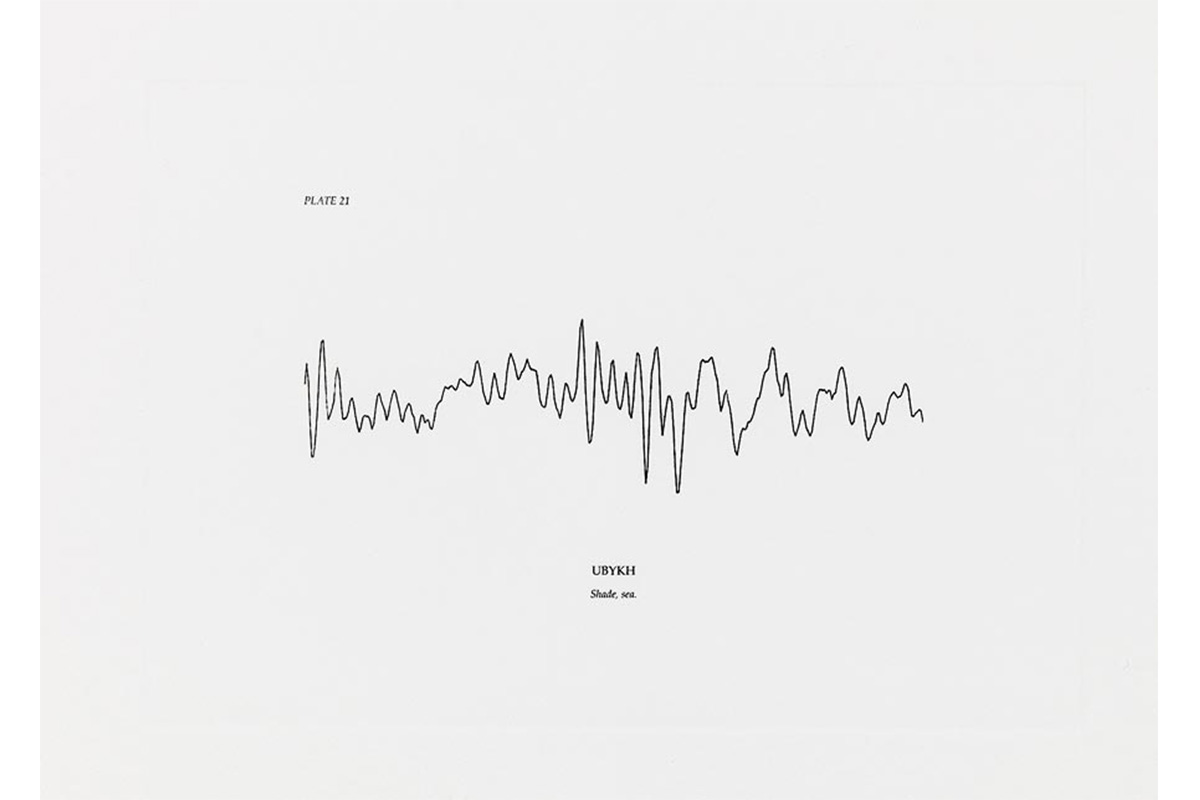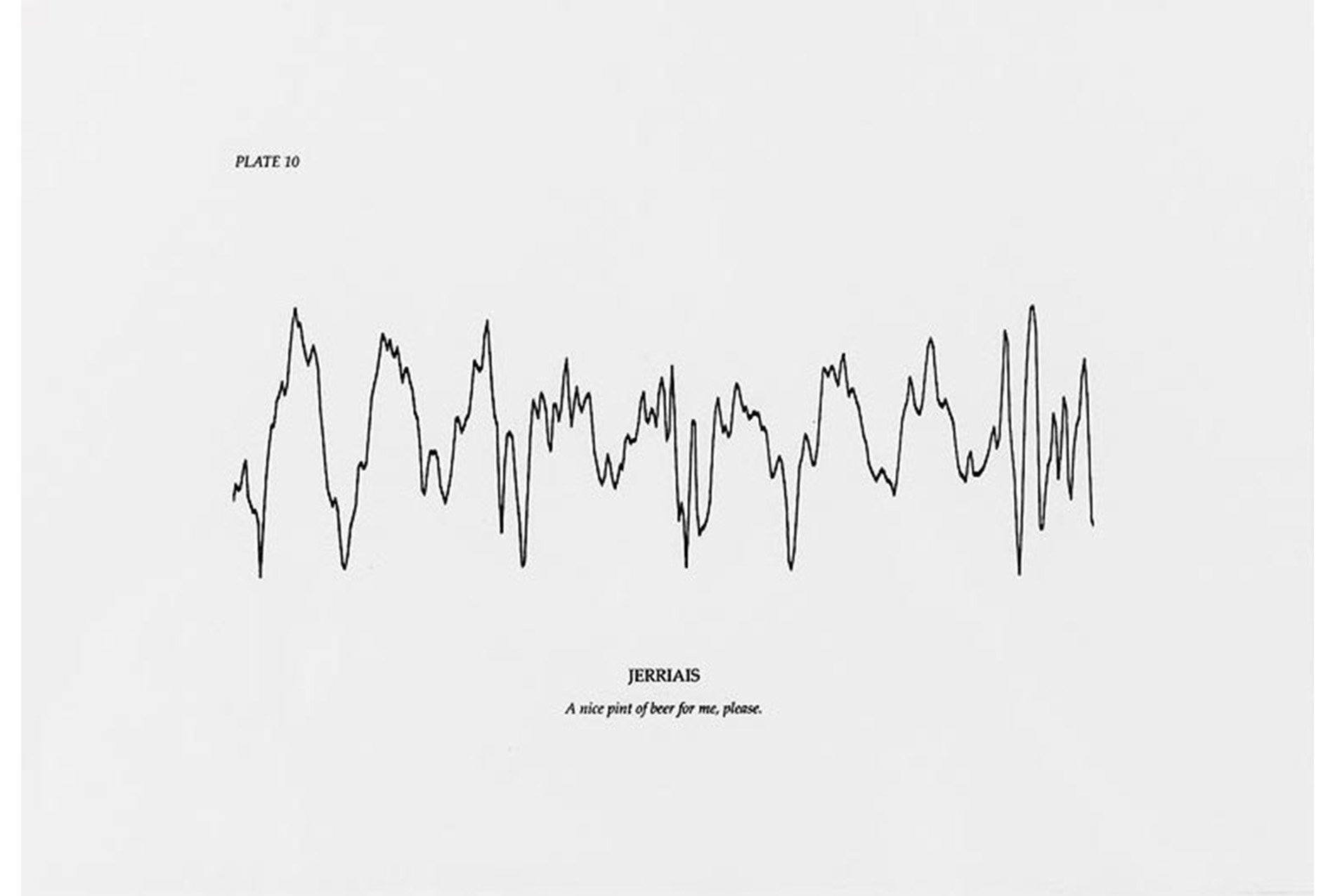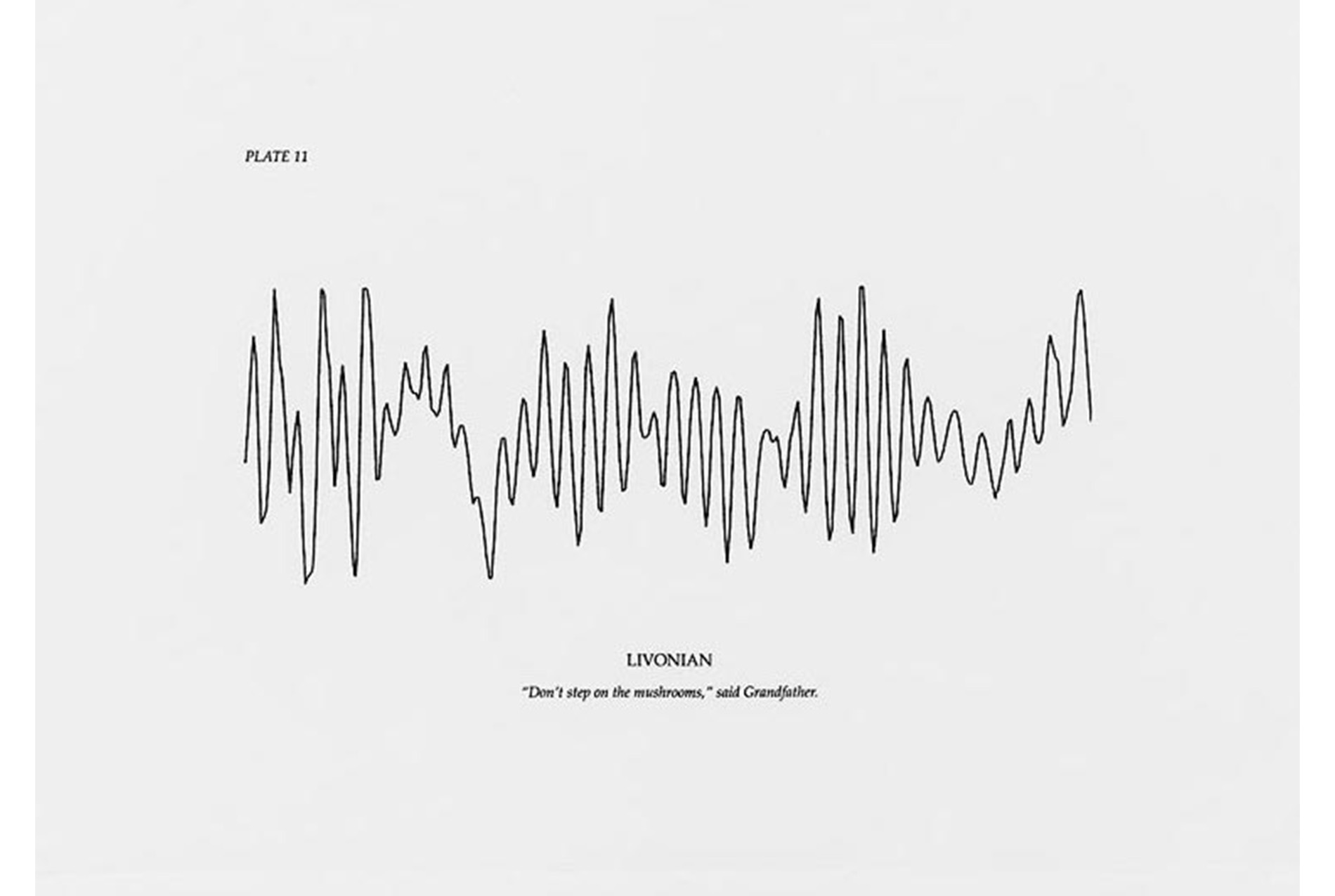
The Last Silent Movie
Guest blogger Karysa Norris (Dartmouth College '12) was a participant in the 2011 Summer Institute in Art Museum Studies. She also served as the 2011 Brown SIAMS Fellow, a four-week internship in the Cunningham Center for the Study of Prints Drawings and Photographs.
White. Why. Kidney. It roasts.
What if these were the only words left of our language? In a time when it seems new words are added to the English dictionary every day thanks to the internet and the growth of international communication it’s difficult to imagine that our language could ever dwindle down to a few disjointed, trivial phrases. For the Ubykh people of Turkey, however, this is a harsh reality – their language is extinct, only to be heard in recordings saved in anthropological databases.
Language death like that of Ubykh is the focus of Susan Hiller’s The Last Silent Movie, a compilation of recordings of extinct and endangered languages from around the world. As a student who grew up in Hawaii before studying at Dartmouth College, I am more sensitive to language death than most; the rehabilitation of the endangered Hawaiian language has been ongoing since the fifties and Dartmouth, an institution initially chartered to educate Native American youth, has a large population of Native American students dedicated to preserving their culture and language. Still, I have not inherited these native languages, so I have had a fringe awareness of the topic at best.
The first time I wandered into the Nixon gallery to see The Last Silent Movie, I wasn’t expecting very much. I rarely find digital media pieces entertaining enough to hold my attention for very long, and I was only curious about the project because I had been told that Hiller had been inspired by a recording made at Dartmouth of the Lord’s Prayer in Wampanoag, an extinct language that is currently being revived. I sat down in the darkened room and was immediately captivated by the words flashing across the screen, translating the speech playing from the speakers. As unfamiliar sounds were translated into meaningful words in front of me, over and over I found myself thinking, “What if this was all that was left of my language? What if this was the only representation left of my culture?” Even though I had an appointment to get to I couldn’t pull away, I simply had to stay and listen to these lost languages because people were speaking and someone needed to be there to hear them. When the film ended with a speaker of Comanche, a language listed as “seriously endangered,” saying “From now on we will speak Comanche forever” in her native tongue, I was overcome with a strange mixture of hope, pity, and horror, caught between wanting to believe the truth in the words and knowing their futility.

Susan Hiller. American, 1942–2019. Jerriais, plate 10 from The Last Silent Movie, 2009. Etching on 270 gsm Moulin de Gué (Rived de Lin) paper. Purchased with the Janet Wright Ketcham, class of 1953, Fund. SC 2010.26.10.
Over the next few weeks I found myself being constantly drawn back to Hiller’s project. She also produced twenty-four etchings of sound waves from a few phrases heard in the movie, and I spent a lot of time looking at the print of the South African Kulkhassi language. The sound wave of this extinct language clearly has a rhythm, but the translation is unknown. It’s easy for me to dismiss an untranslated voice as mere sound, but this print was visible, tangible proof that Kulkhassi wasn’t just random noise, it had a structure and meaning that is now lost. I thought of Hawaiian and the native languages of the students at Dartmouth, and I realized that they too could soon become just sine waves on paper.
Language death is an issue that I have been aware of for years, but it wasn’t until I experienced The Last Silent Movie that I really understood the impact it has on people. It reminded me of something that I had almost forgotten: even if you think you know all about a subject, art can reveal it to you in new ways.

Susan Hiller. American, 1942–2019. Livonian, plate 11 from The Last Silent Movie, 2007. Etching on 270 gsm Moulin de Gué (Rived de Lin) paper. Purchased with the Janet Wright Ketcham, class of 1953, Fund. SC 2010.26.11.